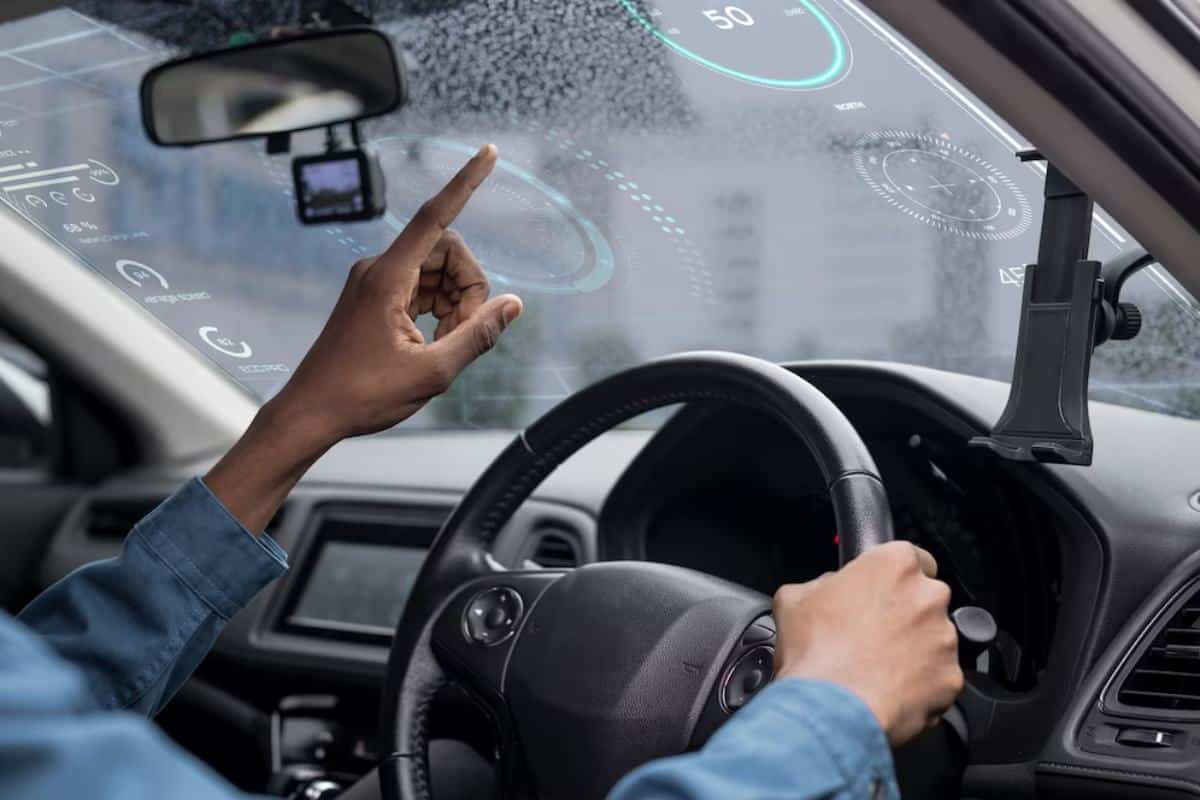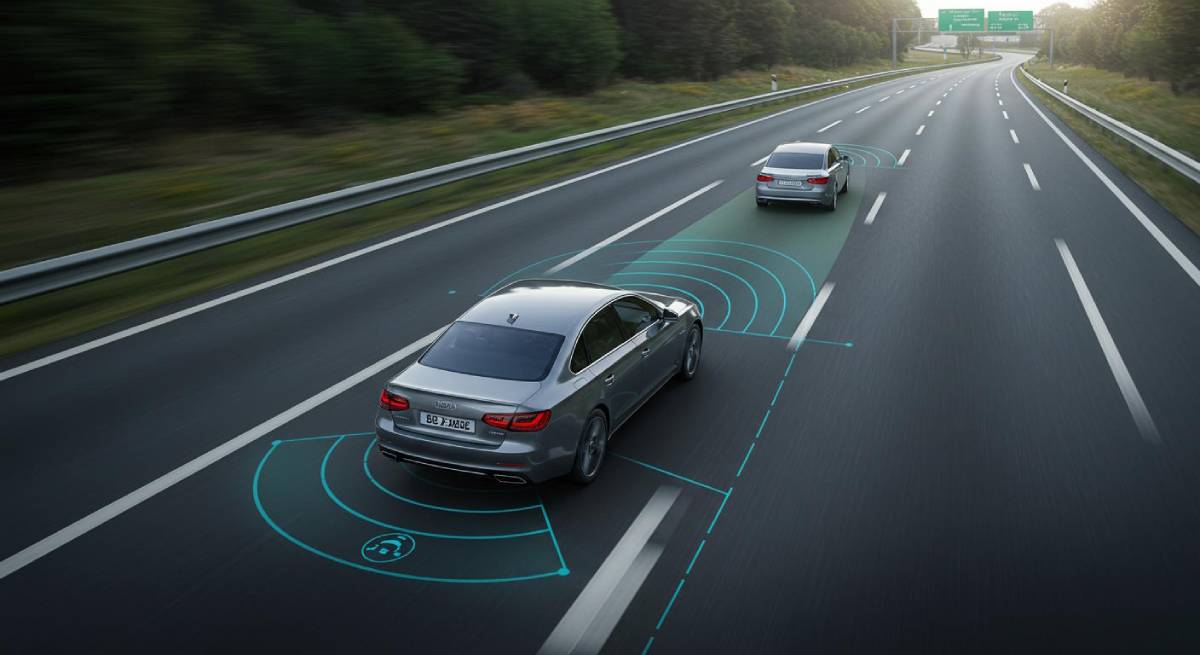
How Adaptive Cruise Control Enhances Driving Safety
In the fast-changing world of car technology, Advanced Driver Assistance Systems (ADAS) are key. They improve vehicle safety and make driving easier. Among the myriad of features that ADAS offers, Adaptive Cruise Control (ACC) stands out as a significant advancement. This technology not only epitomises the future of driving but also plays a crucial role in enhancing driving safety. In this blog, we will explore Adaptive Cruise Control. We’ll look at its benefits, real-world uses, and how it makes driving safer.
Key Benefits of Adaptive Cruise Control
Adaptive Cruise Control is a smart safety feature. It automatically changes your vehicle’s speed to keep a safe distance from the car in front. ACC is different from traditional cruise control. Instead of just keeping a set speed, it uses radar and cameras. These tools help it watch traffic and adjust speed as needed. This adjustment boosts safety by lowering the chance of collisions. It also makes driving easier, especially on long trips or in heavy traffic.
Enhanced Safety and Comfort
One of the primary benefits of Adaptive Cruise Control is its ability to enhance both safety and comfort. ACC automatically adjusts speed to help prevent tailgating. Tailgating is a major cause of rear-end collisions. This feature keeps a safe following distance. It gives drivers peace of mind and lowers the chance of accidents.
Furthermore, ACC contributes to a more comfortable driving experience. It alleviates the need for constant speed adjustments, allowing drivers to focus more on steering and navigation. This is especially helpful on long motorway drives. Keeping a steady speed can be boring and exhausting.
Fuel Efficiency and Environmental Impact
Adaptive Cruise Control also plays a role in promoting fuel efficiency. ACC helps save fuel by optimizing speed and cutting down on extra braking and acceleration. This not only saves drivers money but also reduces the environmental impact of driving by lowering carbon emissions.
Why Adaptive Cruise Control Matters
Adaptive Cruise Control is important not just for drivers. It also affects road safety and traffic management. ACC can lower accidents caused by driver inattention or fatigue. This happens by reducing human error. This is especially important in the UK. Busy motorways and crowded city areas often challenge drivers.

Real-Life Applications and Data-Backed Insights
Adaptive Cruise Control helps improve driving safety in real-world situations. Cars with ACC have fewer rear-end crashes than those without it. A study by the European New Car Assessment Programme (Euro NCAP) found that cars with ACC saw a 27% drop in rear-end crashes.
Moreover, ACC has been instrumental in promoting smoother traffic flow. ACC-equipped vehicles can reduce traffic congestion. They do this by keeping steady speeds and safe distances, especially during busy times. This not only benefits individual drivers but also contributes to overall road efficiency and safety.
Additional Expert Tips & Common Mistakes to Avoid
Adaptive Cruise Control offers numerous benefits. It is essential for drivers to understand its limitations and use it correctly. Here are some expert tips and common mistakes to avoid when using ACC:
Best Practices for Using Adaptive Cruise Control
- Know Your System: Learn the features and abilities of your vehicle’s ACC system. Different manufacturers may have variations in how ACC functions, so it is crucial to read the manual and understand the settings.
- Stay Alert: ACC can lower driver workload, but it doesn’t replace attentive driving. Always keep your hands on the wheel and be prepared to take control if necessary.
- Set Settings Right: Most ACC systems let drivers choose how far to follow. Ensure that this setting is appropriate for the current driving conditions, such as weather and traffic density.
Common Mistakes to Avoid
- Overreliance on Technology: One common mistake is relying too heavily on ACC and neglecting other aspects of driving. Remember that ACC is an aid, not a replacement for driver judgment and attention.
- Ignoring System Alerts: Pay attention to any alerts or warnings from the ACC system. These are designed to inform you of potential issues or the need for manual intervention.
- Avoid using ACC in bad weather: Heavy rain or snow can hurt sensor performance.
Advanced Insights and Expert Recommendations
Integration with Other ADAS Features
Adaptive Cruise Control works best when paired with other ADAS features. These include Lane Keeping Assist and Automatic Emergency Braking. This mix builds a better safety net. It cuts accident risks and boosts driver confidence.
The Role of Artificial Intelligence
Future versions of ACC will be more intuitive and responsive thanks to AI advancements. AI helps ACC systems learn from how drivers act and the surroundings. This makes driving experiences more personal and adaptable.
Industry Perspectives and Future Trends
Experts say Adaptive Cruise Control will keep evolving. There will be more focus on connectivity and vehicle-to-vehicle communication. This will help ACC systems better predict traffic and hazards. This is a step toward fully autonomous driving in the future.
Conclusion: The Road Ahead for Adaptive Cruise Control

Adaptive Cruise Control is more than just a convenience feature; it is a vital component of modern driving safety. ACC improves comfort, cuts down accidents, and helps traffic flow better. This makes it a big step forward for car technology. In the future, developing and integrating ACC with other ADAS features will be key. This will help make roads safer and more efficient.
For drivers, using Adaptive Cruise Control makes driving easier. It also helps create a safer environment for everyone. Technology keeps advancing, and ACC could change how we drive. This makes it an exciting time for the auto industry and drivers.
Think about the benefits of Adaptive Cruise Control. This technology can improve your driving experience and make roads safer for all. What steps can you take to incorporate ACC into your driving routine, and how can you stay informed about the latest advancements in this field? Safer driving starts with smart choices and a readiness to embrace new ideas.